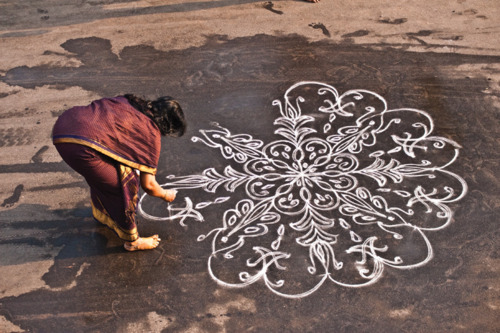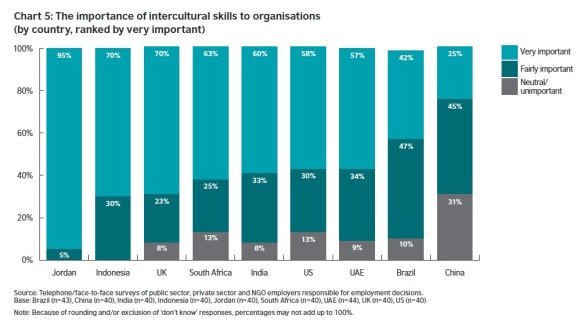 We are proud to announce a brand-new, complete update to Cultural Detective India. As you know, we update our Cultural Detective packages a few times a year, in minor ways, as things happen around the world. Values seem to be the slowest things to change. Societal shifts take time and then, once they happen, boom! Big changes are afoot. We have a best-selling India package in our series, one that gets rave reviews, and we have been looking a long time for fresh eyes and new energy to update Professor Madhukar Shukla‘s terrific work. I am pleased as punch to report to you that two incredibly talented interculturalists have added to the greatness of this package: Shilpa Subramaniam and Melanie Martinelli. Read on for a bit of back story on this wonderful new version.
We are proud to announce a brand-new, complete update to Cultural Detective India. As you know, we update our Cultural Detective packages a few times a year, in minor ways, as things happen around the world. Values seem to be the slowest things to change. Societal shifts take time and then, once they happen, boom! Big changes are afoot. We have a best-selling India package in our series, one that gets rave reviews, and we have been looking a long time for fresh eyes and new energy to update Professor Madhukar Shukla‘s terrific work. I am pleased as punch to report to you that two incredibly talented interculturalists have added to the greatness of this package: Shilpa Subramaniam and Melanie Martinelli. Read on for a bit of back story on this wonderful new version.
—
When we first discussed updating the Cultural Detective India package, we realised that we were both very drawn to the work. Being interculturalists, avid travellers and facilitators of intercultural sessions, we both felt that we could bring a different flavour to the package.
Our biggest challenge was collaborating, as our travel schedules and calendars didn’t really put us in the same geography! So it might not come as a surprise that our first brainstorming session was in a car when we were travelling out of the city (Bangalore in this case) to co-facilitate a session.
The picture above is the two of us sitting next to the river Cauvery and brainstorming our way through the package! What was so interesting about that conversation was that both of us have such different perspectives: Melanie is a Swiss national who has lived and worked in India for more than a decade and is married to an Indian; Shilpa is Indian born, was brought up all over the country and has lived and worked outside of it. And yet, we found powerful experiences and threads that we had in common when living/ working / experiencing this wonderfully diverse country. Cultural Detective strives to have authors work in teams on packages, to have this insider-outsider joint perspective, and we quickly learned why that is invaluable.
We had quite a few “breakthroughs” during the process of brainstorming and writing the CD India package, but perhaps the most interesting one was when we tested out the idea of “privilege” being one of the core Indian values. In India, privilege isn’t just hierarchy and status, it is this clear-cut idea that if you belong to a certain social strata, then there are certain privileges that are ascribed to you, and these privileges differ across strata, class and religion. Yet the word “privilege” could have such negative connotations to some that it might not fit the golden rule of core country values—no value is positive or negative, they are neutral because they can be perceived both ways. So, while we both agreed on the fact that we needed to talk (or rather write) about privilege, we wanted to find ways to present multiple facets and sides to the concept and how it manifests itself in India.
Another interesting moment was recognizing that the reason India as a culture can be complex to understand is because it has so many shades of grey. For example, communication can be direct yet indirect depending on the situation. So what could we tell our participants/readers about the communication style in India? Therein was born our new, cool (even if we say so ourselves!) table that makes distinctions among the ways in which different values are manifested across urban or rural environments, generations, in multinational corporations and domestic business. The objective of this table is to help the reader understand how the same value can be demonstrated in different—and sometimes even opposite—ways. We hope that the underlying message that is the integral CD message: always analyse the context of any situation while trying to understand or decode it.
The newly revised CD India package builds on the previous version and is updated based on current social, economic, political and business contexts. It has a lot more practical and hands-on tips and best practices for those who are living and working in India, because that’s what we as authors look for when we take off to another country. We’ve ensured that there are elements that speak to what this information means to you if you’re working and/or doing business in India. It’s been written with a lot of care (we’ve tried to stay away from declaratives), excitement (we’re getting to shape how the country is perceived!) and thought (we discarded version after version until we were satisfied with it)!
Come and take the journey to India through our new Cultural Detective India package, now available in CD Online as well as via printed PDF, and explore its vastness, complexity and uniqueness! Happy travels!












